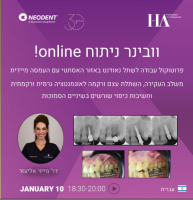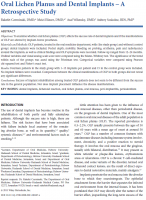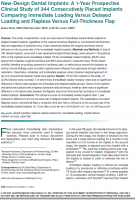ABSTRACT
Objectives: To examine whether oral lichen planus (OLP) affects the success rate of dental implants and if the manifestations
of OLP are altered by implant-borne prostheses.
Materials andMethods: OLP patients, treated in the oral medicine department,with (the study group) and without (control
group) dental implants were included. Pocket depth, mobility, bleeding on probing, erythema, pain and radiolucency
around the implants, as well as clinical findings and OLP symptoms were recorded. Follow-up ranged from 12–24 months.
Ordinal variables and visual analog scale score were compared using the Mann–Whitney test. The significance of the trend
within each of the groups was assed using the Friedman test. Categorical variables were compared using Pearson
chi-squared test and Fisher’s exact test.
Results: Fourteen patients in the study group with 1–15 implants per patient and 15 in the control group were included.
No implant failures were recorded. Comparison between the clinical manifestations of OLP in both groups did not reveal
any significant differences.
Conclusions: Success of implant rehabilitation among treated OLP patients does not seem to be different from the success
rate in the general population. Nor does implant placement influence the disease manifestations.



